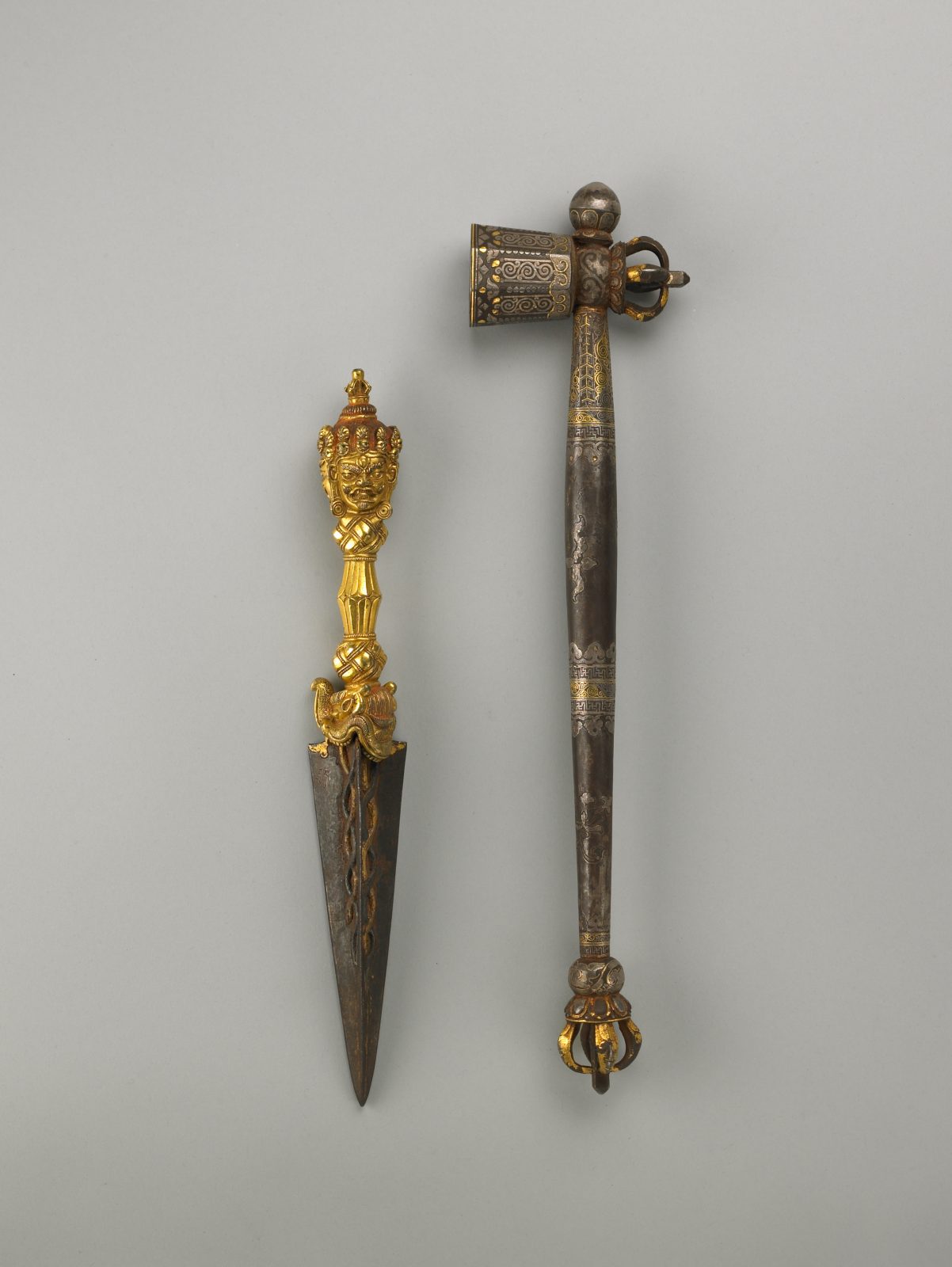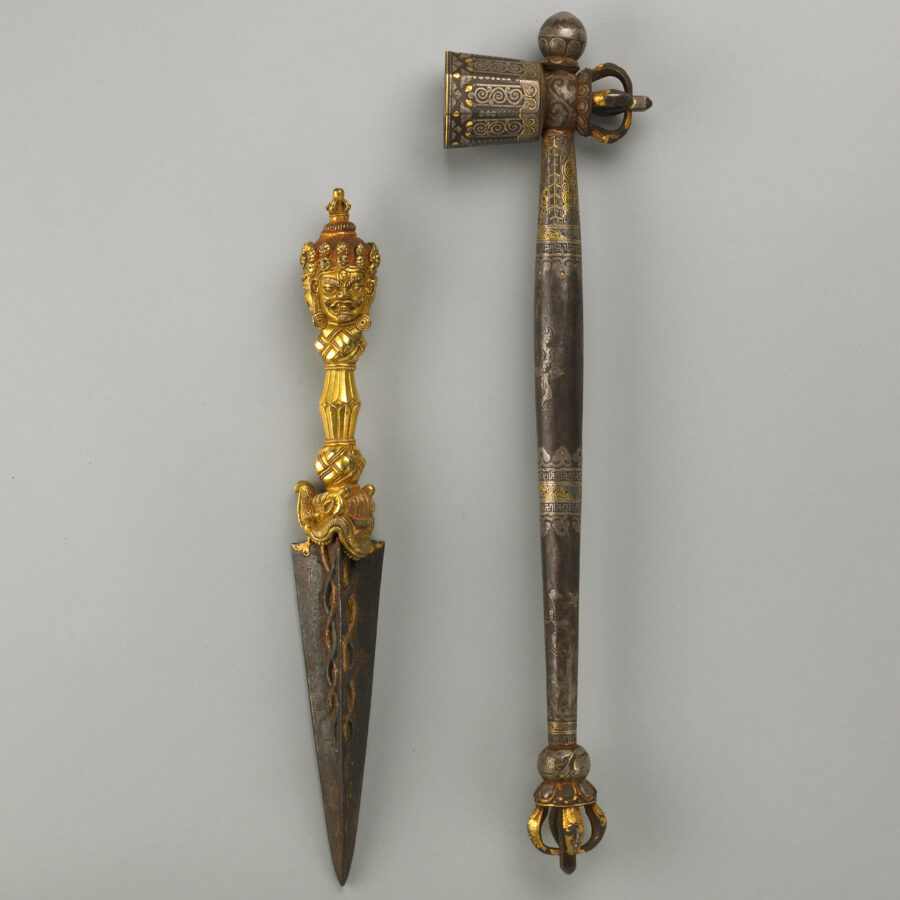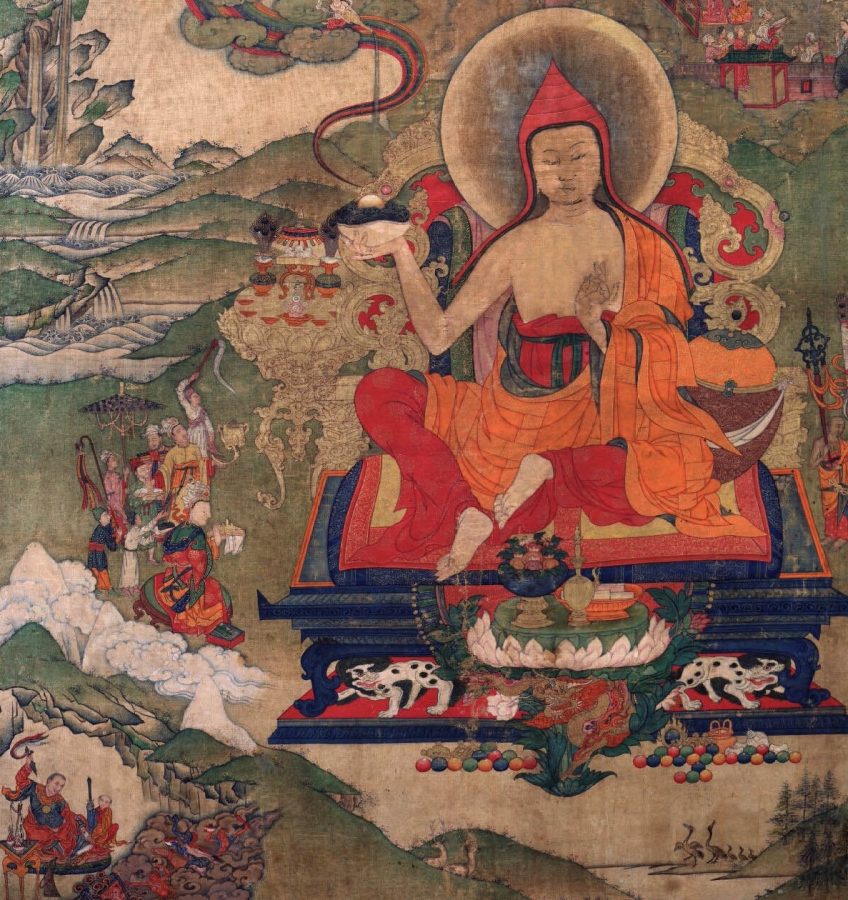Tibet
ca. 17th century
This implement is used in tantric rituals and is also an attribute of wrathful deities. It symbolizes cutting through ignorance, desire, and hatred, the three “root poisons” that perpetuate the cycle of birth, death, and rebirth.


